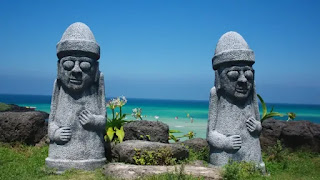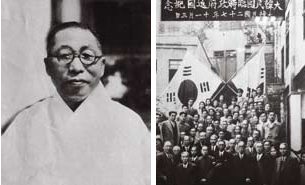The Best Tourist Attractions in Jeju South Korea and friendly for Muslim visitors
The famous and best
tourist attractions in Jeju become a special attraction for tourists who will
vacation to South Korea. Jeju is one of the nine provinces in South Korea,
where the province is located on Jeju Island. There are so many popular tourist
destinations on Jeju Island that you must visit while on vacation. Jeju became
a very famous tourist attraction and natural attraction.
Jeju Island is arguably
the 'Island of the Gods' of South Korea. Offering not only beautiful nature,
but also a variety of delicious food and interesting activities. To develop
halal tourism, the Governor of Jeju Island, Won Heeryong said, several attempts
had been made to bring in more tourists from Indonesia. Starting from providing
halal food and musala so that tourists do not experience difficulties for
culinary tourism and worship.
Hallasan (Mount Halla)
For those of you who
love nature or who like to climb mountains, you can of course try to climb
Mount Halla in South Korea. Halla Mountain is a mountain tourism destination on
Jeju Island with a height of up to 1950 meters, so that when it reaches the top
it will get an unforgettable experience. To climb this mountain there are 6
hiking routes namely Eorimok, Seongpanak, Gwaneumsa, Yeongsil, Donnaeko, and
Eoseungsaengak. To make the Mount Halla climb, you need to do a thorough
preparation and do not forget to bring food supplies.
Manjanggul
Manjanggul is one of
the favorite tourist destinations for tourists who want to explore the cave.
This cave is about 30km east of Jeju city and it takes about 30 minutes by bus.
Manjanggul Cave is a lava tunnel that was formed around 200 thousand-300
thousand years ago, when molten rock came out of the ground. This place has a
width of 23 meters, 30 meters high, and the length of the cave reaches 8,928
km. Here tourists will find bat colonies and other living things such as
spiders. A jacket is recommended because water often drips from the top of the
cave and the temperature in the cave is cold.
Cheonjiyeon Waterfall
For those of you who
want to enjoy a waterfall tour in Japan, you can try Cheonjiyeon Waterfall. The
meaning of the word 'Cheonjiyeon' means 'sky connected to the ground'. There
are three waterfalls, which are 22 meters high, 12 meters wide, and 20 meters
deep. Here the tourists can enjoy the sound of waterfalls with clear water.
Cheonjiyeon Waterfall is open every day at 09.00 - 22.00 with the last entry at
21.30.
Hallasan National Park
Hallasan National Park
is a national park in the Hallasan volcano. This park was established as a
UNESCO biosphere reserve in 2002 and a world heritage site in 2007. This area
is famous for various types of plants with different temperatures. More than
1,800 plant species and 4,000 animal species (including 3,300 insect species)
have been identified in this area. To explore this park area, you just need to
follow one of the hiking trails that have been made. To achieve this requires a
distance of about 10km and the hiking trail is relatively easy. However, it is
better to prepare well before starting the climb.
Seongeup Folk Village
Seongeup Folk Village
is one of the famous tourist attractions in Jeju with a variety of cultural
beauty. The village is located in the foothills of Mount Halla with many
traditional Korean homes. Here, you will find cultural heritage such as
statues, dwellings, temples, schools, offices, castle ruins, and stone
monuments. In addition, there are many hundreds of years old trees that are
part of the region's heritage. Being a famous cultural heritage, you tourists
can enjoy the beauty of this village for free (no charge).
Osulloc Tea Museum
At the tourist spot of
the Osulloc Tea Museum, tourists can learn about the historical development of
Korean green tea. Then, you can explore the third largest green tea garden in
the world and can taste different types of tea. In addition, the tourists can
learn a lot about how to make and serve tea and enjoy the processed products in
the cafe available. You can taste the ice cream with the taste of green tea and
buy souvenirs of authentic green tea from Jeju.
Gwaneumsa Temple Jeju
Gwaneumsa Temple Jeju
is a Buddhist temple located at the foot northeast of Halla Mountain. This
temple is believed to have been built for the first time in the era of the
Tamra dynasty (476 BC - 1005 AD), which was before the Goryeo dynasty (918 AD -
1392 AD). Then in 1912 it was rebuilt and in 1964 it was renovated again. To
reach Gwaneumsa Temple Jeju, you need to head to Sancheondan from Jeju city.
The bus will depart every 20 minutes and will be driven for 30 minutes. After
reaching Sancheondan, you need to walk about 30 minutes to get to the temple.









Komentar
Posting Komentar